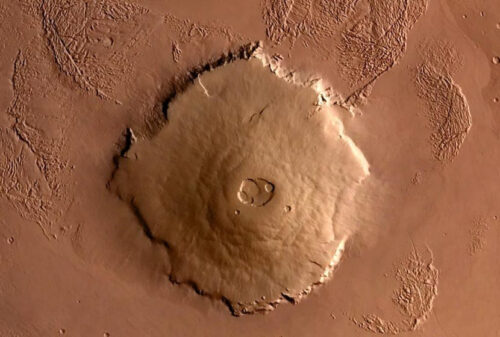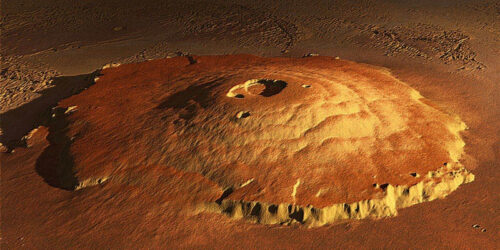
Mount Olympus on Mars stands as a majestic and awe-inspiring natural wonder in our solar system.
With its towering height exceeding 21 kilometers, this shield volcano represents both the beauty and scientific importance of the Martian landscape.
In this article, we delve into the geological significance of Mount Olympus, its role in space exploration, and its capacity to inspire wonder and appreciation for the vastness of our universe.
Rising above the Martian surface, Mount Olympus is an extraordinary shield volcano formed by volcanic eruptions and the accumulation of lava and other materials.
Situated on the Tharsis plateau, a massive volcanic plateau on Mars, it proudly claims the title of the tallest peak on the planet.
Its towering stature and distinct geological features make it a captivating sight for both scientists and space enthusiasts.
The discovery of Mount Olympus on Mars marked a significant milestone in space exploration. It offered scientists a unique opportunity to study the planet’s geology and tectonic activity.

By examining the volcano’s composition and formation, researchers can gain valuable insights into the history and evolution of Mars, shedding light on the geological processes that have shaped the Red Planet.
Mount Olympus serves as a compelling scientific target for researchers keen on investigating the potential for past or present habitability on Mars.
Analyzing the volcano’s geology and the presence of any organic compounds could provide clues about the planet’s past ability to support life.
By unraveling the secrets held within Mount Olympus, scientists move closer to unraveling the enigmatic story of Mars’ habitability.

Beyond its scientific significance, Mount Olympus captivates the imaginations of people worldwide. Its immense size and grandeur serve as a testament to the awe-inspiring power of the natural world.
The majestic vistas and geological wonders found on Mars, including Mount Olympus, ignite a sense of wonder and curiosity, reminding us of the vastness of the universe and our place within it.
Mount Olympus on Mars stands as a remarkable natural wonder, embodying both the awe-inspiring beauty of the universe and the scientific marvels awaiting exploration.
Its towering presence and unique geological features make it a crucial target for researchers studying the geology and tectonics of Mars.

Moreover, the grandeur of Mount Olympus ignites our imaginations and reminds us of the profound mysteries and boundless possibilities that lie beyond our planet’s boundaries.
